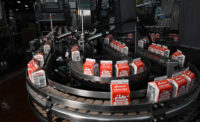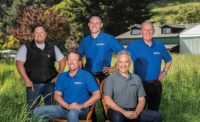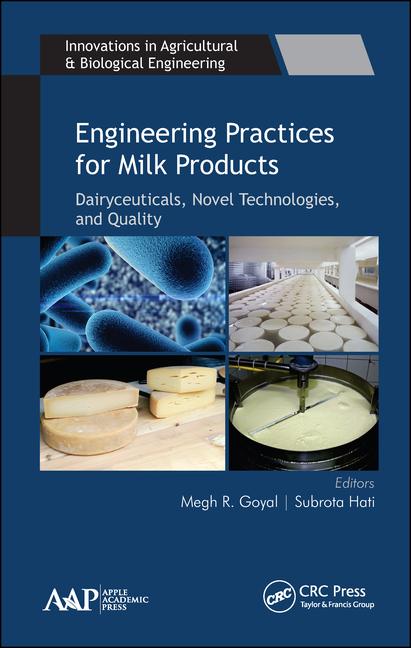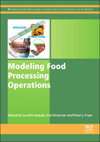Darigold is thinking big
The processor isn’t just looking out for itself. It wants to show the value dairy can bring to the food industry, to the U.S. economy and to the world








A cooperative, by definition, works together for a common goal. But for Seattle-based Darigold, the marketing and processing subsidiary of the Northwest Dairy Association (NDA), this idea of prioritizing the greater good extends beyond its business category. The cooperative’s plans for long-term growth include supporting the dairy industry as a whole.
“Of course we want to be the share leader, but we want to do it in a way that drives category growth,” says Duane Naluai, senior vice president of consumer products. “Not, ‘I win; someone else is going to lose.’”
This bigger-picture perspective is thanks to the company’s 430 farmer-owners, who influence every part of the company’s culture and decision-making, says Stan Ryan, president and CEO. As farmers, they operate as stewards of the land and of their animals, which means they have to be cognizant of the long-term effects of their choices. And as their company, Darigold follows suit.
“The fundamental values of the owners flow through the organization,” Ryan explains. “It’s not an arm’s length transaction. It’s an osmosis-type of thing.”
One of those values is innovation. Even though it is more than 100 years old, Darigold acts young for its age. Ryan says this is because its farmer-owners “have a high risk quotient.”
“You ever hear the expression, ‘don’t bet the farm’?” he asks. “Well, farmers bet the farm.”
The company has seen results of its forward thinking, and not just in the Northwest area its farmers call home. It’s one of the largest dairy companies in North America, coming in at No. 21 in Dairy Foods’ 2019 Dairy 100 list of North American dairy processors.
And it continues to grow: Darigold’s net sales for the fiscal year ending March 31, 2019, were $2.296 billion, up from $2.264 billion in 2018.
Building the cooperative
NDA, which was originally called United Dairymen’s Association of Washington, was formed in 1918. Over the past century, a series of mergers and acquisitions made the cooperative the size it is today, says Dan McBride, director of business operations for NDA.
In 1981, NDA hit an important milestone: It merged with Mayflower Farms, the largest dairy-farmer cooperative in Oregon, notes McBride. This effectively grew the company by one-third, adding three plants in Washington and Oregon as well as new producers. (In fact, the company continues to operate a former Mayflower Farms plant in Portland, Ore. see Inside the Plant story)
Other growth points included the acquisition of Dairymen’s Creamery Association in Idaho and Eastern Oregon in 1991. And in 2000, NDA acquired Country Classic in Montana. Now the cooperative, the largest in the Northwest, produces 9 billion pounds of milk annually, says McBride.
The majority of the milk goes into the ingredients side of Darigold’s business, including about 40% that is exported, McBride notes. Fifteen percent is sold to third-party processors, and the rest goes into the company’s consumer products.
Taste is king
With its farmer-produced milk, Darigold creates a whole range of dairy foods for consumers. It leads with fluid milk, says Sam Cohen, leader of marketing and innovation, including conventional milk, flavored milk, ultrafiltered milk, half & half, creamers and whipping cream. Its other product lines include packaged cheese, cottage cheese, sour cream and butter.
Darigold’s retail distribution mainly encompasses the Northwest, but Cohen says its extended-shelf-life products such as eggnog and its ultrafiltered FIT milk have made it as far as Chicago.
While 90% of the company’s products are found west of the Rockies, Naluai says Darigold’s goal isn’t only to compete with regional producers: It also looks to major multinational food companies such as PepsiCo, Nestle and Danone.
“Our mission is to be sustainable for the next 100 years, and the only way we’re going to do that is to recognize we compete in global industry,” he adds.
Part of being competitive means recognizing that consumers are looking for more from their food, says Cohen. Recently, he’s seen that consumers want premiumization, and that extends to the fluid milk category.
“It’s really moving from being a commodity of the old-school big gallon jug to be much more of a beverage,” he notes.
But even when adding value to dairy products, taste is king, says Naluai. He points to the fat-free milk era, when consumer focus groups said that they’d buy more “diet” products, but the sales numbers didn’t agree.
“As much as we say we want great nutrition, you have to deliver on great taste,” he says.
Recently, the cooperative had a very successful new product launch: its Darigold FIT line of milk. After going through an ultrafiltration process, the milk contains 75% percent more protein and 40% less sugar than regular 2% milk. The line, which was launched in January of 2019, has done well both from a consumer and a retail-space standpoint, Cohen says.
Other recent successes from Darigold include Farmer’s Reserve butter, which is an 83% butterfat European-style butter, and branded cheese.
“We’ve been predominately a private label cheese maker, but in the past three years, we’ve launched our branded cheese business,” Naluai says. “We continue to see distribution and velocity gains, and we’re really proud of our medium and sharp cheddar.”
Doing the research
So how are successful products such as Darigold FIT milk developed? Cohen explains that they’re the end result of a long qualitative and quantitative research process.
“We do both quantitative and qualitative exercises to really understand consumer needs,” Cohen notes. “We also do a fair amount of syndicated data mining, more category management type data. So whether it be IRI data or retail or shopper card data, we look for trends and opportunities there as well.”
On that quantitative side, Darigold has done concept testing, which involves surveying consumers by showing them a picture or description of the product and telling them what the price would be.
“And we do that as a benchmarking exercise against competitive products,” Cohen explains.
On the qualitative side, Darigold uses focus groups to help understand consumers’ emotions around dairy. It also conducts ethnographies, which involve going into customers’ homes to see what’s in their refrigerators and how they use dairy in their households.
The ethnographies have painted a prettier picture for dairy than the overarching media narrative does, says Cohen. What he’s specifically learned from talking to consumers is the emotional ties they have to dairy.
“It’s easy as a marketer, it’s easy as a business to think a lot about features and benefits,” he says. “[But] a lot of what you get is actually just the satisfaction that consumers feel with dairy. There’s more enthusiasm for dairy when you actually get out and talk to consumers than you realize.”
Telling the story
In an era where transparency in the supply chain is increasingly important to consumers, Darigold’s rich history of farmer ownership is an important selling point in the cooperative’s marketing material, says Cohen.
“Everyone’s concerned about where their food comes from today as much as what’s in their food,” he says, “and I think we have the ability to market our brand and market our product where you can really know where things come from to the point of knowing the [farmer].”
According to Naluai, that means telling the story of Darigold as a cooperative comes before marketing any specific product.
“You have to tell consumers today what you’re about and what you care about before they’ll listen to you about what you’re going to sell,” he says.
Naluai has seen increased interest from consumers in substantial storytelling. This is why he decided to hire Tafline Laylin, an environmental journalist, as opposed to a public relations or marketing specialist, to head up The Daily Churn, which is the company’s new digital magazine. Laylin previously contributed freelance articles to The Atlantic, The Guardian and NBC News.
According to Darigold’s website, The Daily Churn “comprises an effort by Darigold to foster mutual understanding through civil discourse and content that transcends the oversimplification of social media.” The publication features articles and videos that not only cover news relevant to the dairy industry as a whole, but also help Darigold tell the story of the farmers who produce its milk.
“We believe truly that one of our core strategic competitive advantages is the Northwest Dairy Association and our farmers,” Naluai notes. “You have to establish a foundation of trust with the consumers. Nothing [is] more important than the source of the milk. Job No. 1 is for us to tell that story properly and make that meaningful to consumers.”
Cohen agrees.
“If you look at our social media … a lot of that content actually gives you a window into who made your food,” he notes. “And that creates a trust that’s worth as much as any features we would add to the product.”
After content is posted to The Daily Churn website, it’s repurposed for social media platforms such as Facebook and Twitter. The publication follows a newsroom approach, with an editorial board and calendar. The goal is to have a constant stream of engaging content, says Naluai.
Recent successful stories include a video featuring “cowboy poet” Tim Huls, who wrote a poem about his neighbor in Montana being forced to close his dairy farm. Another recent feature was on a young farmer who was recognized for his sustainability efforts.
According to Naluai, storytelling is a way for Darigold to show the diversity of its dairy farmers and to break the “Dodge pickup truck” stereotype.
“What we’re trying to do is introduce Darigold and Northwest Dairy Association members to consumers in a different and more engaging way,” he says, “to create different voices to remind consumers that dairy is part of your life and part of your community.”
While right now The Daily Churn is mainly headed up by Laylin, Naluai says the company plans to expand to include freelance contributors.
Expanding the market
Marketing specific products comes after telling the story of Darigold, says Cohen, and for that, the company uses shelf-back marketing and digital advertising. For shelf-back marketing, the company focuses on creating “great packaging, great signage, big displays [and] demonstrations” he notes.
The cooperative mainly does targeted advertising and very limited conventional television/radio ads. It uses social media, ads on specific websites such as YouTube and Hulu, and digital couponing through shopping apps as ways to research its targeted consumer base.
“I would say we are almost exclusively digital at this point,” notes Cohen. “So we do a fair amount of pure digital display and video, and a lot of that is things like pre-roll video or various dynamic digital units … that you would typically see from consumer brands.”
The consumer it’s most interested in is the millennial parent who is responsible for making food purchasing decisions for the household, says Cohen.
“If you’re 30 and you have a 1-year-old, then the amount of eating at home you do is greater,” he notes, “[So] the amount of dairy you buy in total is greater from that standpoint.”
Another major advertising focus are home cooks, as many recipes involve a lot of dairy products such as milk, cheese and cream.
100 more years
To survive for 100 more years, Darigold is “increasing the pulse.” Ryan says moving faster is crucial to keeping up with the competition, and that involves quickly learning from mistakes and moving on to the next idea.
“I would say everything that competes with dairy has just accelerated over the last decade, a lot faster than dairy has as an industry, and [it] has to pick up,” Ryan adds.
He pointed to the stagnant school milk carton as an example for how dairy needs to innovate. The carton hasn’t changed in decades, even though it’s prone to sogginess.
“You could say maybe [the dairy industry] fell victim [to] getting a little traditional, and the world moved beyond,” he says. “We need to get out of the more traditional and into modern day, to coin a way to look at it.”
For Darigold’s part, it has assembled an executive team ready to take on that challenge, says Marie-Claude Milot, head of people, culture and engagement. The cooperative has hired people with backgrounds from huge companies such as PepsiCo and Cargill who understand how to “increase the pace of change.”
“We were looking really at people who had been there and done that, understand commodity, understand [consumer product goods], all those elements,” she adds.
Ryan emphasizes that the fundamentals are there: Dairy is a highly nutritious product that can be made into a number of different healthy foods. And there’s endless opportunity there, not just for dairy companies, but for the world at large.
“The United States has arguably the best, or one of the two best, agricultural systems in the world. We are in an outstanding place to supply the world with nutritious, affordable and sustainable products of great scale,” he says. “And the big victory wouldn’t just be [for] our industry, our country, our trade surplus exports, all the jobs it generates.”
He points to infant formula as a “life-changing” way that dairy can help “consumers all over the world … bringing kids out of malnutrition at young ages because they can get affordable protein that they really need.”
Looking for a reprint of this article?
From high-res PDFs to custom plaques, order your copy today!













